What It’s Like to Be a Black Ski Mountaineer in Bend, Oregon
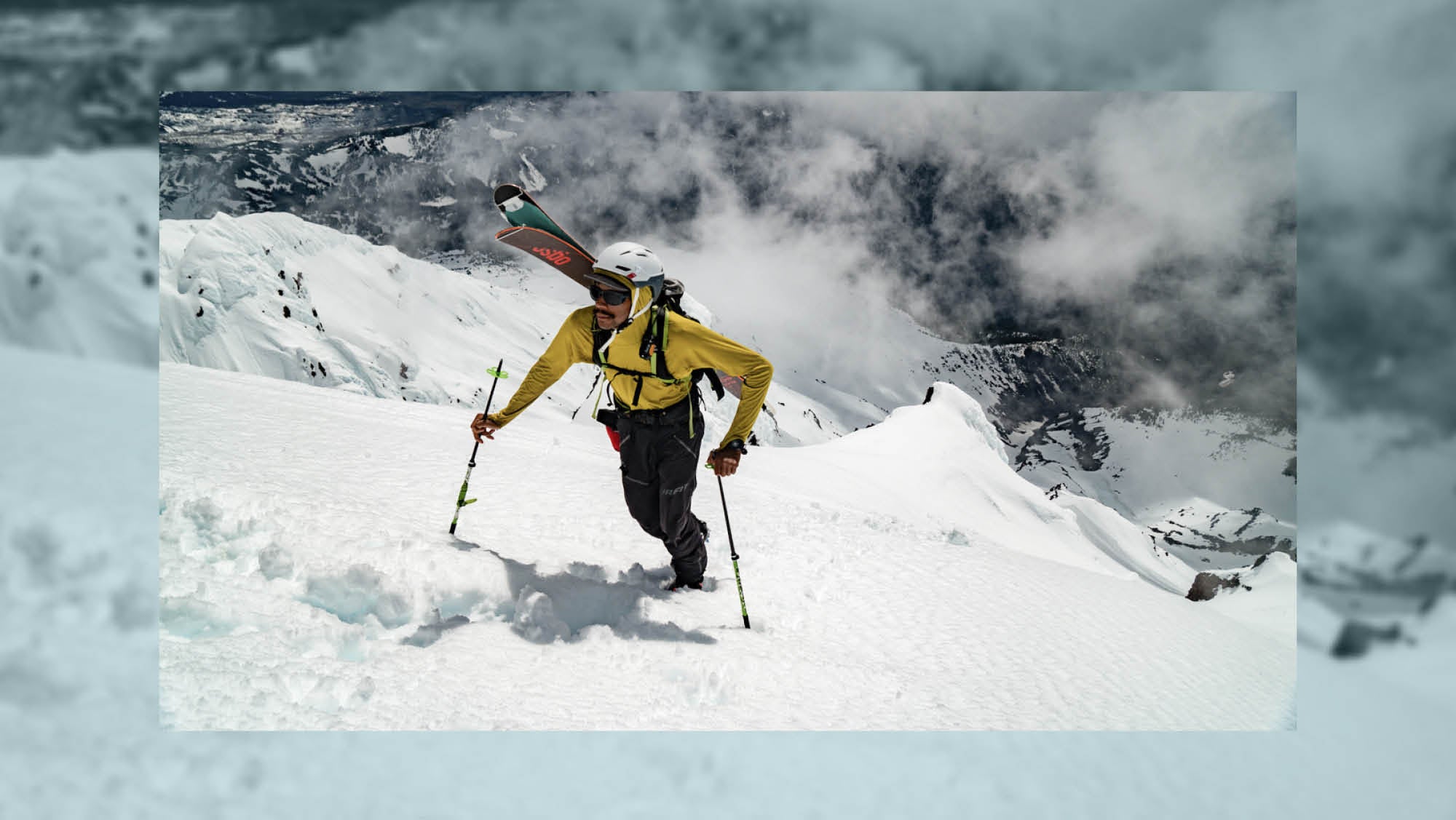
Mallory Duncan gets closer to the summit of West Rib in the Three Sisters Wilderness, located in Oregon's Cascade Range. (Photo: Stratton Matterson)
There I am, networking with the ski elite, the in-crowd of the outdoor industry. I know the inevitable question is coming “So who do you know here?” And when I answer, “I’m an athlete ambassador for the brand,” I feel like I know what they’re thinking:
“He’s probably only a sponsored skier because he’s Black. Must be nice.”
Well, let me tell you a story about how nice it is.
A few months into the pandemic, “sheltering in place” meant living in my van in Bend, OR. Having recently lost my previous job as an outdoor industry sales rep, I decided an escape into the backcountry might help me regain control of my spiraling anxiety.
Stratton Matterson organized a small crew, including Zak Mills, Ian Zataran, and myself. Our goal was to circumnavigate Oregon’s second tallest and least explored volcano.
Over three nights and four days, we unplugged from the chaos of the world while traversing our way across the mountain’s various aspects. We skied thousands of feet of perfect corn snow, traversed crevassed terrain, filled our water bottles in glacial creeks, and rested our weary bodies on warm lava rock. Rockfall echoing through the mountain’s canyons was our soundtrack.
I’ve never been on such an epic journey with such a diverse crew.
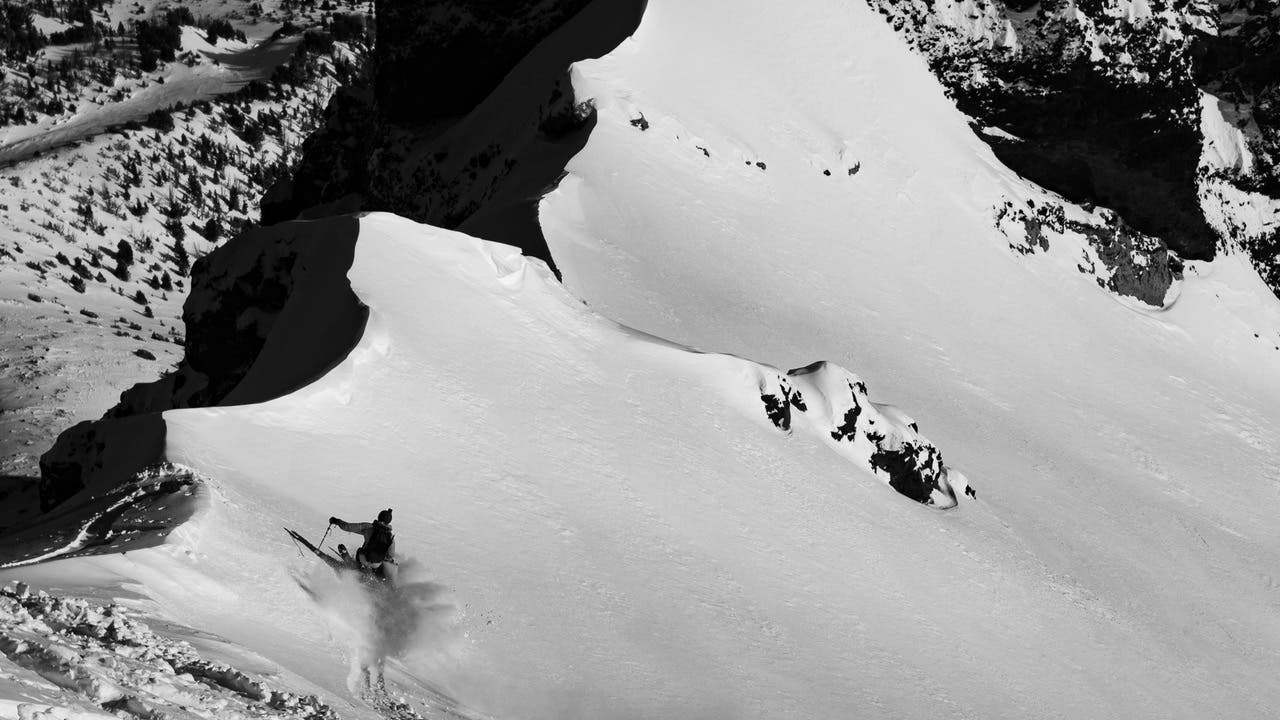
Read More: How Skiing’s Whiteness Has Affected Me, and How We Can Change It
It was a beautiful balance with the mountain, the sun, and the stars—nomads finding equilibrium in this vast landscape between survival and the simple pleasure of sliding on snow. I remember thinking how special this crew was. I am Black, Ian has Mexican heritage and a dark complexion, Stratton white-passing yet part Japanese, and Zak is white. I’ve never been on such an epic journey with such a diverse crew.
Camping on the mountain’s south side the final night, the sky was crisp and clear. We climbed a large hill of scree and gazed into the deep quiet of the wilderness as shooting stars danced in the alpenglow. The pandemic, the fear of social distancing, and the mundanity of quarantine—all forgotten. But, over Bend in the distance, ominous thunderclouds crackled, as if the city was warning us not to return. We didn’t know it at the time, but George Floyd was just killed by Minneapolis police officer Derek Chauvin.
The next morning, we awoke with one more line to ski and then out to the trailhead and down the hill to an unexpected reality. Back in Bend, I slipped through the front door of my partner’s house, excited to relay the tale of our epic journey.
In the distance, ominous thunderclouds crackled, as if the city was warning us not to return. We didn’t know it at the time, but George Floyd was just killed.
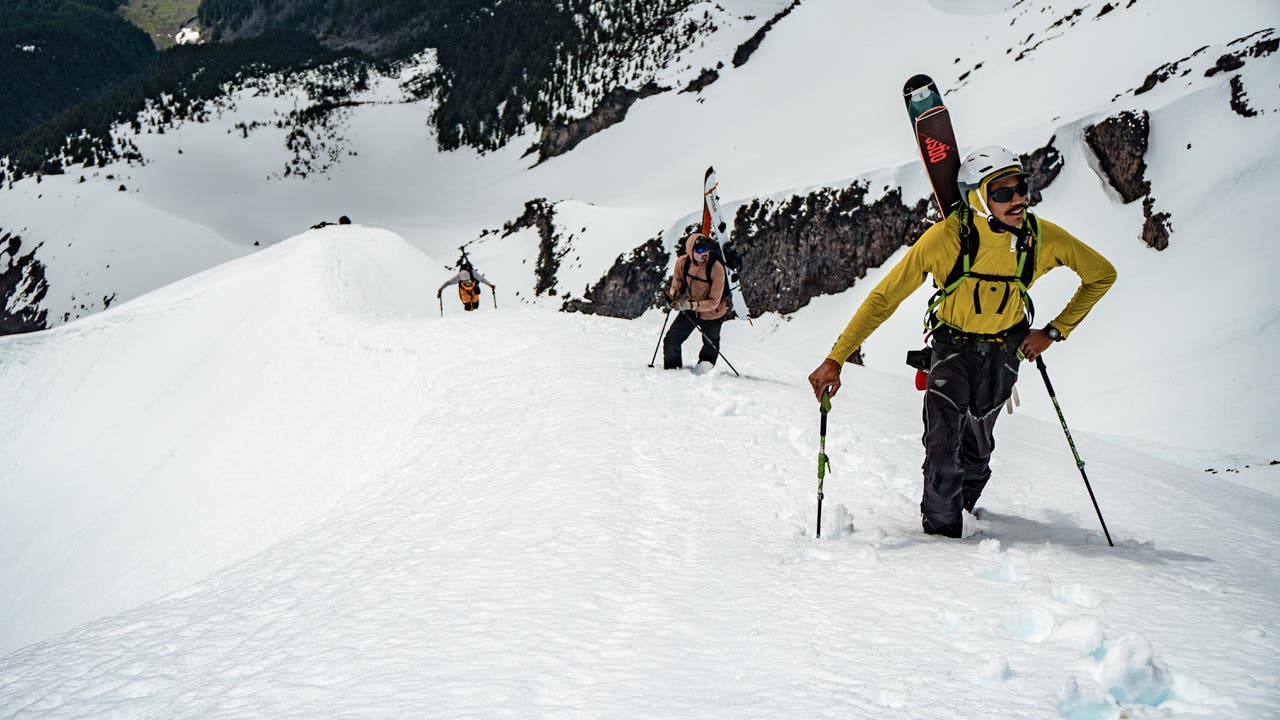
She greeted me with: “Did you hear what happened?”
I wasn’t shocked to hear the news; Black people have been systematically killed by the police for years. Floyd’s death wasn’t the first time, just the first time so many people outside of the Black community seemed to care. And, this time, with quarantine leaving little to distract from the news, people jumped into action.
It led to a social revolution, but not one to which I felt connected. With all this sudden recognition of racial inequality and white acceptance of “Black Lives Matter”—I was skeptical. I questioned everyone’s motives. I observed with anger people demonstrating their wokeness by distancing themselves from “those white people” and then patting themselves on the back. On some level, I waited for Bendites to stop caring, so I could say, “See? You don’t actually give a shit.”
I was well aware of my modern enslavement as a Black man, but seeing the proof over and over was traumatic. I felt alone; separated from other people of color while the movement grew. A dismal low replaced the high of the backcountry trip.
I felt alone; separated from other people of color while the movement grew. A dismal low replaced the high of the backcountry trip.
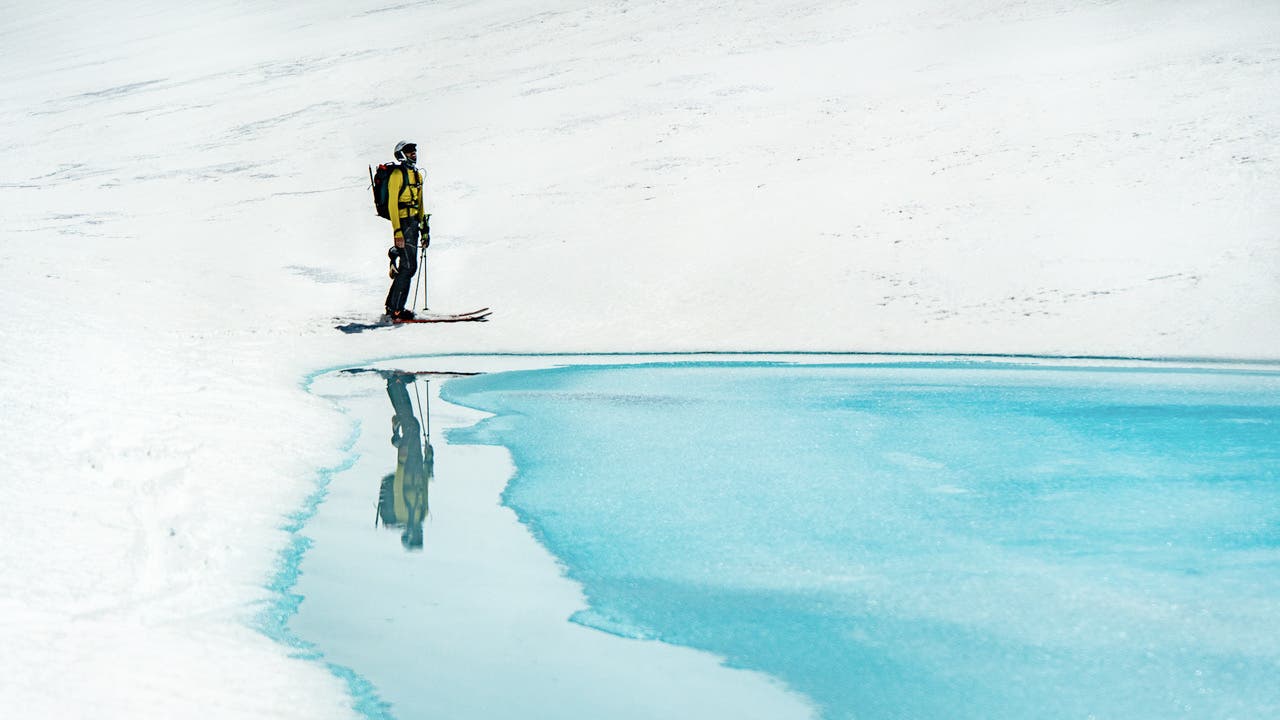
In retrospect, I’m thankful. What happened next made clear that my racial seclusion was unsustainable. For years, I’ve lived in a white city, voluntarily enchained in white culture, surrounded by an industry defined by whiteness. My family and my roots are Black, but I was raised as a skier and thereby indentured to ski culture—the stoke-loving, community-growing, diversity-lacking ski culture.
Then, George Floyd was killed and everyone turned to me, the only Black person they knew. Abruptly, I became the Black liaison for whiteness, a priest in the confession booth of white guilt, asked to absolve people of their Caucasity; asked to exonerate all the racism of the people of Bend.
When the protests came to Bend, I wasn’t ready to participate. I didn’t want to be the black poster child tokening a false sense of diversity and inclusive thinking. This movement was about black empowerment and relegating myself to marching in minority alongside peers with no experience in issues of race felt like serving white acceptance, not black empowerment.
Abruptly, I became the Black liaison for whiteness, a priest in the confession booth of white guilt, asked to absolve people of their Caucasity; asked to exonerate all the racism of the people of Bend.
Read More: See The Sport Through the Lens of Skiing’s First Black Photographer
If I was in my hometown in the Bay Area I would’ve been a face in a sea of Black strength. As it was, I felt stifled and I needed to heal.
Because I wasn’t able to surround myself with other Black people, I decided instead to go to a small rafting town called Maupin, north of Bend. It was there that I asked myself what I could do to support the movement without participating in the protests.
My friend and fellow raft guide, Peter, lived with me on a small property in Maupin. He was white, but I brought him into the fold of my social conundrum. Peter listened, tried to understand, and shared his opinions. He is inactive on social media and our conversations felt safe from the performative influences evoked by those platforms.
Over time, I realized how much my assimilation into outdoor culture was based on repressing my blackness. Outerwear disguises my skin color and protects me from the white gaze. Pulling my face mask up, I bury my blackness deep down. I lost part of my identity; the Black Lives Matter movement melted that disguise away.
In June, I circumnavigated a snowy volcano to help me cope with the trauma of the pandemic. Now, I floated along that same snow after it melted into the Deschutes River, in order to reconcile my conflicted feelings about racial solidarity. In conversation with Peter, I navigated the murky waters of uncertainty to the confluence of clarity and intention.
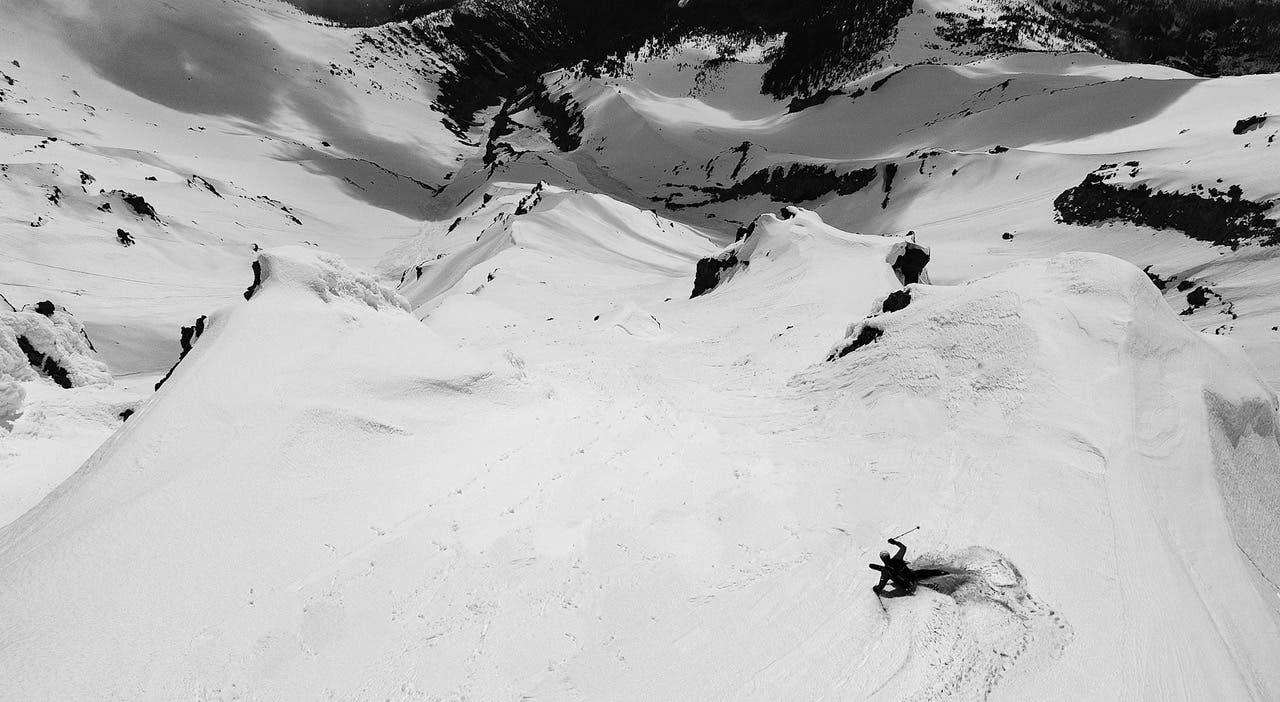
Over the years, the outdoors has provided more than just a sanctuary for therapeutic release; it’s been a source of employment and connection as well. I’ve recreated my way through the hardest moments of my life; this is the gift that I want to share with Black culture: Break down socio-economic barriers and introduce Black people to the healing from which I benefited.
Since last summer, I’ve made myself available to the brands I trust, as a role model and a representative for blackness in a white industry. I no longer repress my race to achieve opportunity; I emphasize it to bring equality. My manager at Oberalp asked if I want to address the lack of racial inclusion in the outdoor industry, and the answer is yes. Mending a past of discrimination and exclusion is a tough task, but incorporating our culture into the narrative is an important first step.
By posting videos and photos that highlight my skin color, I help dispel the myth that Black people don’t ski.
While elements of Black culture heavily influenced the snow sports industry in the ’90s that relationship was largely appropriative and rarely driven by black athletes. To address this, I created a blog that amplifies black voices, embraces hip-hop, soul, street art, and poetry to re-tell the story from a black perspective. On social media, by posting videos and photos that highlight my skin color, I help dispel the myth that Black people don’t ski. Lastly, by working through organizations like the NBS and Outdoor Afro, while utilizing demos provided by Oberalp, I introduce BIPOC communities to backcountry skiing in an inclusive space.
So, yeah, it’s cool to be sponsored, “just because I’m Black.” Just know that there’s a whole lot more to it than just being Black.